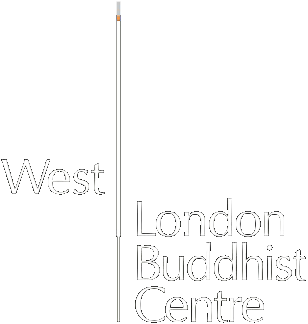What About Anger?
We are into our second series of webinars on the Abhidharma’s analysis of the mind. The material, based on Subhuti’s Mind in Harmony, is frequently insightful and thought provoking and provides useful distinctions and connections between mental states. In our latest session we have been looking at hatred and goodwill. The Abhidharma lists rage, resentment, spite and envy as secondary outgrowths of hatred (Subhuti’s translation of the Sanskrit ‘pratigha’). Curiously, there is no mention of anger. And yet anger may be one of the most blatant and common forms of aversion that we experience in daily life. This anger might be our own, or the anger of those with whom we come into contact, or perhaps anger on the streets in the form of demonstrations against social injustice, such as the recent BLM marches. So in relation to the Abhidharma, or more broadly in relation to Buddhism in general, the question arises – what about anger?
 In Sangharakshita’s book Know Your Mind, for which Mind in Harmony is a companion volume, he translates ‘pratigha’ as anger rather than as hatred. He translates ‘dvesa’ as hatred. In Bhante’s interpretation, hatred involves a wish to harm. Anger, ‘an explosive release of energy with a view to breaking through an obstacle’, however, does not necessarily involve the intention to harm – anger may be deployed ‘quite skilfully’. It is possible to use anger to galvanise one to action (e.g. against a perceived injustice), while being careful not to cause harm or damage in the process. So anger is ‘not entirely incompatible with metta, at least in the long run’.
In Sangharakshita’s book Know Your Mind, for which Mind in Harmony is a companion volume, he translates ‘pratigha’ as anger rather than as hatred. He translates ‘dvesa’ as hatred. In Bhante’s interpretation, hatred involves a wish to harm. Anger, ‘an explosive release of energy with a view to breaking through an obstacle’, however, does not necessarily involve the intention to harm – anger may be deployed ‘quite skilfully’. It is possible to use anger to galvanise one to action (e.g. against a perceived injustice), while being careful not to cause harm or damage in the process. So anger is ‘not entirely incompatible with metta, at least in the long run’.
Anger is, of course, a natural emotional response to painful experience that we have evolved. Denial or repression of anger could lead to a damaging alienation from our own emotional life, a core aspect of our humanity. To avoid this danger, Bhante enjoins us to be aware of our anger as an energy, to really feel it rather than to deny or repress it. Perhaps that awareness will be sufficient to contain and assimilate the energy. But often energy wants an outlet, a channel through which to flow. Unexpressed anger can fester. As Blake puts it (from A Poison Tree):
‘I was angry with my friend:
I told my wrath, my wrath did end.
I was angry with my foe:
I told it not, my wrath did grow.’
The challenge then is to direct that energy into skilful expression. The key to achieving this, Bhante instructs us, is to prevent our anger from developing into hatred.
Another practical challenge that anger poses is in the area of communication. Situations that evoke anger often demand clear and sometimes immediate communication. However, one of the insights of Non-violent Communication (NVC) is that for real communication to happen, certain basic conditions need to be in place. Good communication (i.e. communication that is likely to get it’s message across) involves four key components – non-judgmental observation, expression of one’s own feelings, the identification of needs and a request on the basis of these needs. On top of this, and crucially, it also involves a reciprocal listening to the feelings, needs and requests of those with whom we are trying to communicate. For most of us, fulfilling these conditions is no easy matter, even when we are calm and even-tempered. To be able to communicate effectively then from a place of anger – now that’s pushing it.
Anger itself is a type of communication – a raw, loud and passionate declaration that the status quo will not stand. It makes people take notice. But without the precise and skilful work of reciprocal communication to accompany it, who is listening, other than those already converted?

